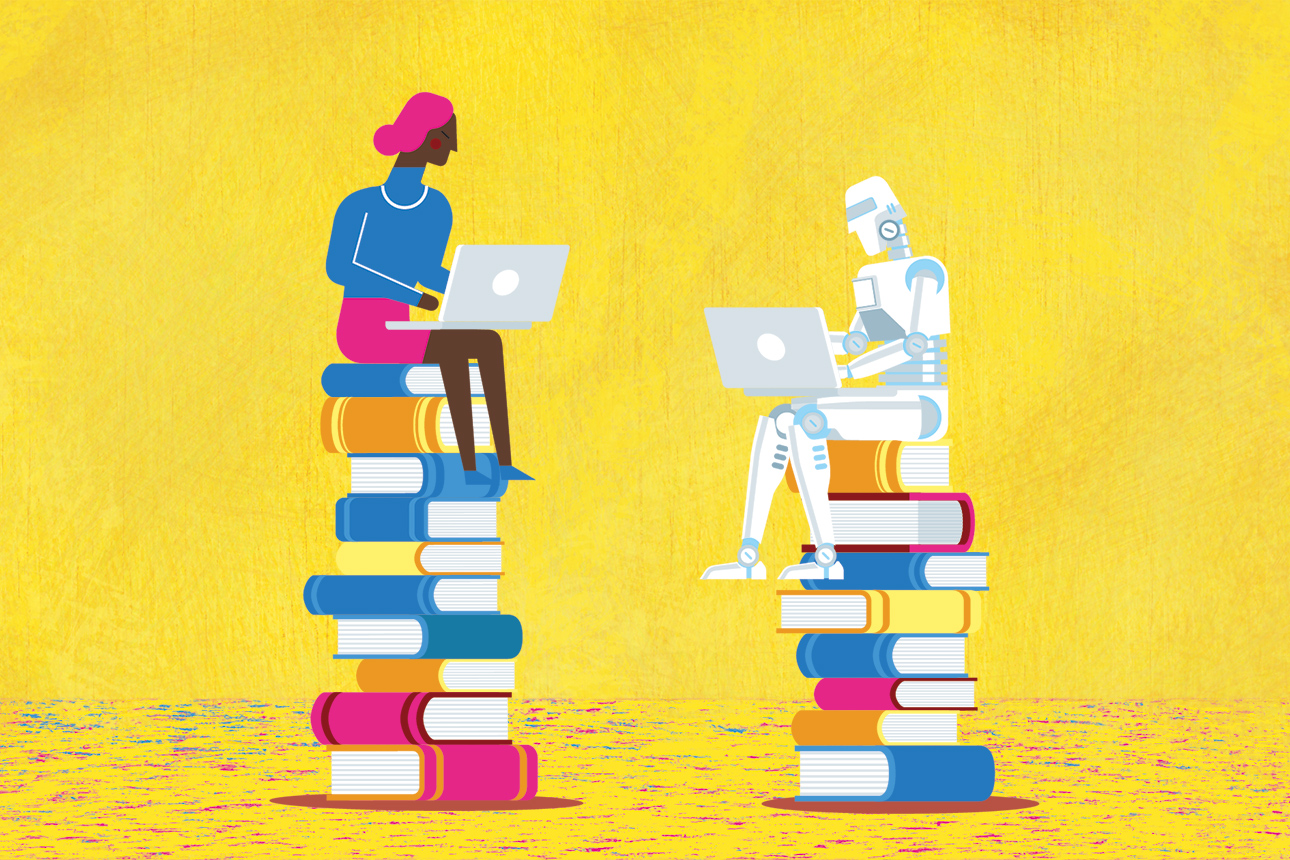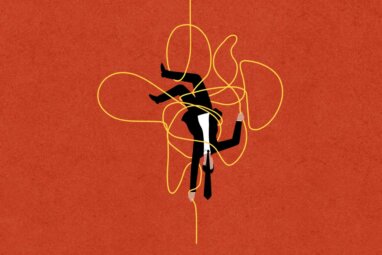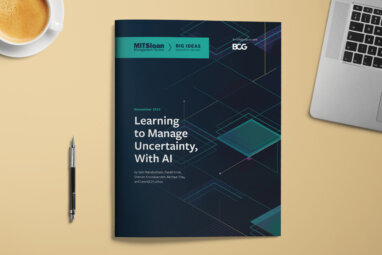A Paradox No More: Investing in Automation and People
Automation is here, but so too is a deeper appreciation for investing in learning and skills development for human workers.
Topics
The Future of Workplace Learning
Brought to you by
Skillsoft
This time, the robots really are coming.
For the first time, the majority of robots ordered last year in North America won’t be going to automotive factories. Instead, companies in the consumer goods, pharmaceutical, and biomedical industries are responsible for a significant upturn in orders.
The COVID-19 pandemic made new standards for social distancing critical, and that, in turn, has empowered companies to turn to robots. Employers across the country turbocharged their investments in technology and automation. These accelerated investments, combined with a crippling recession and mass layoffs, disproportionately affected low-wage workers, women, and underrepresented minorities.
Scientist and fiction writer Isaac Asimov once wrote, “You can’t differentiate between a robot and the very best of humans.” The fear of automation, if not robot overlords, has been a fixation of business analyses and science fiction for generations. So with U.S. employers embarking on a clearer path toward machines, it might be easy to read these developments as a dire sign for American workers. In particular, some victims of robots would seem to be investments in areas like upskilling and education. The presumption might be that building a better bot gives you more bang for your buck.
Except the opposite appears to be happening. Automation is here, but so too is a deeper appreciation for and investment in things like upskilling, learning and development, and education for all workers.
There’s a simple explanation underlying this apparent paradox.
Robots don’t program themselves. Managers are required to design and oversee processes that use technology. In most organizations, that means there’s an urgent need to upgrade talent. Robots and other forms of automation also require regular maintenance, tweaks to their performance, and other important quality-control measures that require a human touch. And managers are becoming all too aware of the implicit bias that can creep into the algorithms that undergird artificial intelligence — and the need for humans to proactively monitor for and correct it.
To be clear, automation in the form of robots, artificial intelligence, and more will take over tasks that are part of routines that are repeatable and rules-based. In many cases that will mean that automation replaces parts of jobs: According to McKinsey, by 2030, “around 15% of the global workforce, or about 400 million workers, could be displaced by automation.” But for many organizations, automating some tasks will both enable them to do more and make it more critical that they upskill their workforces.
If your company is actively educating and upskilling its workforce and fully builds this effort into its strategy, it is less likely to be caught flat-footed by broader changes in technology.
Confronting Talent Scarcity
An organization has two ways to upgrade its technical and managerial talent. The first is to hire talent into the organization — whether newly minted college graduates or highly skilled individuals from other organizations. The second strategy is to deeply invest in the upskilling and reskilling of one’s own workforce.
Over the past generation, companies have gone the first route. There are twin challenges, however, that make this strategy increasingly untenable.
Technical talent is scarce. A study by Korn Ferry found that by 2030, the global talent shortage could reach more than 85 million people. The U.S. Bureau of Labor and Statistics reports that computer and IT occupations are likely to grow much faster than the average of other occupations over the next decade, driven by the rise of cloud computing, big data, and information security. And that was before COVID-19 accelerated the time frames of investments in technology.
Given that technical talent is scarce — and now even more in demand — it’s also expensive.
That means that employers need a better solution. Many are turning to the second strategy — investing in the skills of one’s own workforce — to stay relevant in an increasingly digital world. The old guard is crumbling, in other words. And the frailties of the traditional workforce-education system are more apparent. As a result, we should expect more employers to arrive at this point in the years to come.
As one of us (Michael) wrote in a previous article drawing from Clayton Christensen’s Theory of Interdependence and Modularity, in the early years of a new paradigm — in order to succeed — product and service providers must integrate across all of the unpredictable and performance-defining elements of the value chain.
For many employers, the faulty assumption in the value chain is clear: Traditional education and workforce systems in which colleges and universities educate students and give them a foundation of knowledge and skills that can last a lifetime are no longer realistic. Instead, with rapidly digitizing and automating businesses, to remain competitive, employers must integrate backward and pay for education and upskilling themselves.
This newer path is not only more affordable and more tenable — it is also more strategic and predictable. If your company is actively educating and upskilling its workforce and fully builds this effort into its strategy, it is less likely to be caught flat-footed by broader changes in technology. This creates more stability in the pipeline; you won’t need to recruit a new workforce for new tasks, because you will have a continuously adapting and improving one.
The evidence suggests this is happening.
As of June 2020, 42% of companies had stepped up their upskilling initiatives since the pandemic started. A whopping 88% of learning and development leaders surveyed in May 2020 expected their organization’s spending on education to increase in 12 to 18 months. Sixty-six percent agreed that their function had become a more strategic part of the organization.
What does this look like on the ground?
At Guild Education, where we both work, the number of students we support rose 25% in the aftermath of the pandemic — all funded by forward-thinking employer partners seeking a clear return on their investment.
The ROI of Upskilling
Major companies have realized the strategic benefits of upskilling.
As has been reported widely, Walmart, for example, is opening health care clinics across the country. With more than 4,000 stores in the United States, staffing these clinics with qualified health professionals will be critical, which is why Walmart works with schools like Penn Foster to prepare its retail workers for optician and pharmacy technician roles. Given the vast shortage of health professionals across the country, reskilling its own employees creates a more predictable path forward for a role critical to the company’s strategy.
Fast-casual restaurant chain Chipotle has also stepped up its investment in its employees during the pandemic by expanding its debt-free college program. A major driver of this initiative? The insight that an investment in education benefits makes employees 7.5 times more likely to advance to management roles within the organization. That adds significant predictability to what otherwise is a significant human resource challenge critical to the chain’s strategy. Even in an industry poised to see more automation — and, yes, potentially robots — there’s recognition that a deeper investment in workers creates a better pool of talent to move a business forward.
Discover Financial Services is another organization that provides employees with access to education assistance for strategic reasons. The Discover College Commitment program, in which employees can enroll in a fully paid online bachelor’s degree program, saw more than a 20% increase in enrollment in 2020 compared with 2019. The program’s offerings are tailored to important competencies for the business and skills for the future of work. With it, employees of the credit card company have options to pursue degrees and skills training in business management, business administration, software design, computer and network security, and other increasingly in-demand fields.
More broadly, there’s an emerging dual track of investment in training and new technology. Last year, the Society for Human Resource Management surveyed its membership and found that 75% of HR professionals were either maintaining or increasing their training budgets — numbers that tracked almost identically with investments in new technology, such as automation. These investments aren’t only in the technical skills to work with these new technologies, but also in skills like critical thinking and communication, which often develop through comprehensive degree programs rather than short-form training.
These are some of the reasons why robots, which may finally be here, aren’t — and really shouldn’t be — a harbinger of something negative. In theory, more technology will mean more efficiency for America’s employers and, perhaps, in a post-pandemic world, a safer one. The early signals, however, are that we should not fear new robot overlords. Instead, the sharpest, most strategic companies are making a simultaneous investment in people who can power progress.








